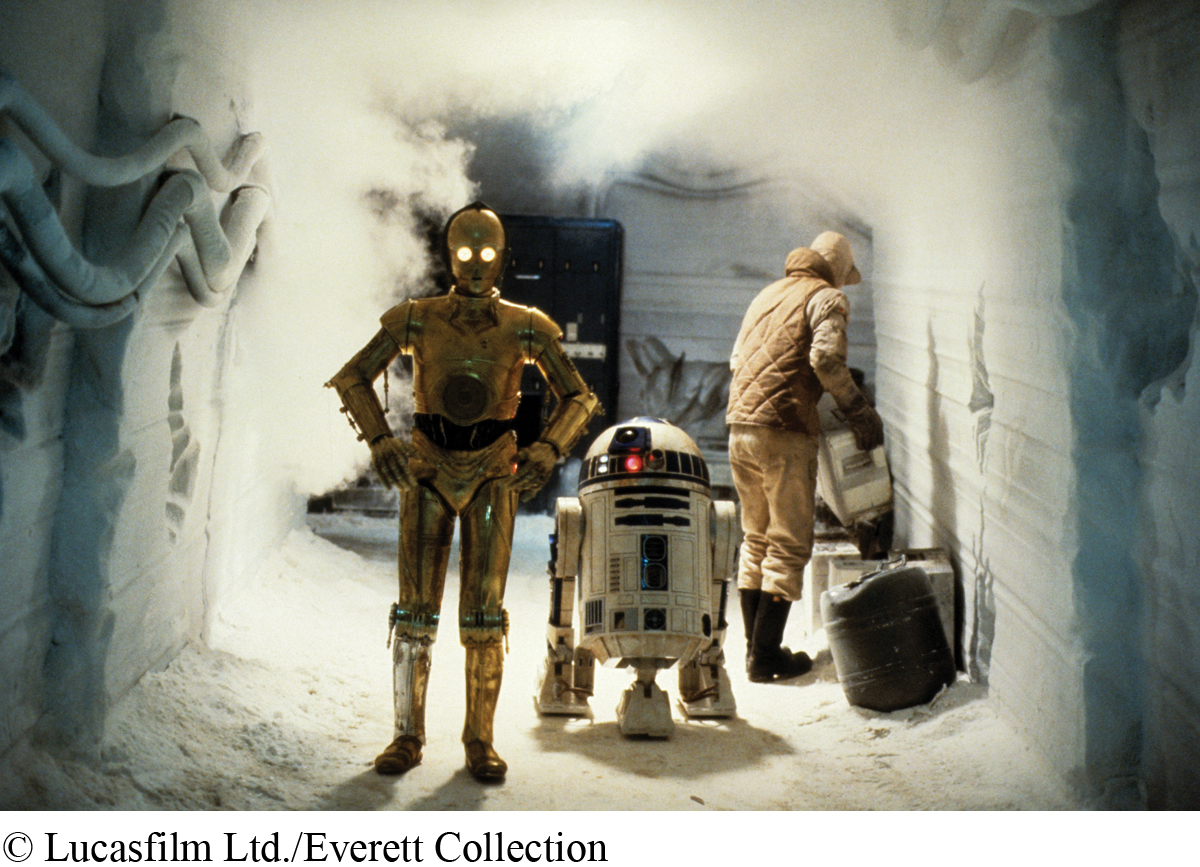Chapter 7 Introduction
SOUND AND IMAGES
7
Movies and the Impact of Images

“A long time ago in a galaxy far, far away . . .” So begins the now-
The space epic changed the culture of the movie industry. Star Wars, produced, written, and directed by George Lucas, departed from the personal filmmaking of the early 1970s and spawned a blockbuster mentality that formed a new primary audience for Hollywood: teenagers. It had all of the now-
Star Wars has impacted not only the cultural side of moviemaking but also the technical form. In the first Star Wars trilogy, produced in the 1970s and 1980s, Lucas developed technologies that are now commonplace in moviemaking: digital animation, special effects, and computer-
Several scenes of Star Wars: Episode I—The Phantom Menace (1999) were shot on digital video, easing integration with digital special effects. The Phantom Menace also became the first full-
The third Star Wars trilogy opened in late 2015, with Star Wars: Episode VII—
At the time of the announcement, Lucas (then sixty-
Some Star Wars purists may groan at the volume of these ancillaries, but Disney’s track record at turning its acquisitions into even greater media and merchandise franchises is enviable. Two other important movie brand acquisitions were its purchase of Pixar for $7.6 billion in 2006, and Marvel for $3.96 billion in 2009.3 Pixar has created some of the most successful animated movies of the past two decades, such as Up (2009), Toy Story 3 (2010), Cars 2 (2011), Monsters University (2013), Inside Out (2015), and Finding Dory (2016). Marvel, in retrospect, appears to be even more of a bargain. Disney-
With the Star Wars franchise now in Disney’s hands, there is potential to develop it into the next top movie franchise. But for The Force Awakens director J.J. Abrams—
DATING BACK TO THE LATE 1800s, films have had a substantial social and cultural impact on society. Blockbuster movies such as Star Wars, E.T., Titanic, Lord of the Rings, Shrek, Avatar, and The Avengers represent what Hollywood has become—
Films have also helped moviegoers sort through experiences that either affirmed or deviated from their own values. Some movies—
Finally, movies have acted to bring people together. Movies distract us from our daily struggles: They evoke and symbolize universal themes of human experience (that of childhood, coming of age, family relations, growing older, and coping with death); they can help us understand and respond to major historical events and tragedies (for instance, the Holocaust and 9/11); and they encourage us to reexamine contemporary ideas as the world evolves, particularly in terms of how we think about race, class, spirituality, gender, and sexuality.
In this chapter, we examine the rich legacy and current standing of movies. We will:
Consider film’s early technology and the evolution of film as a mass medium
Look at the arrival of silent feature films; the emergence of Hollywood; and the development of the studio system with regard to production, distribution, and exhibition
Explore the coming of sound and the power of movie storytelling
Analyze major film genres, directors, and alternatives to Hollywood’s style, including independent films, foreign films, and documentaries
Survey the movie business today—
its major players, economic clout, technological advances, and implications for democracy Examine how convergence has changed the way the industry distributes movies and the way we experience them
As you consider these topics, think about your own relationship with movies. What is the first movie you remember watching? What are your movie-